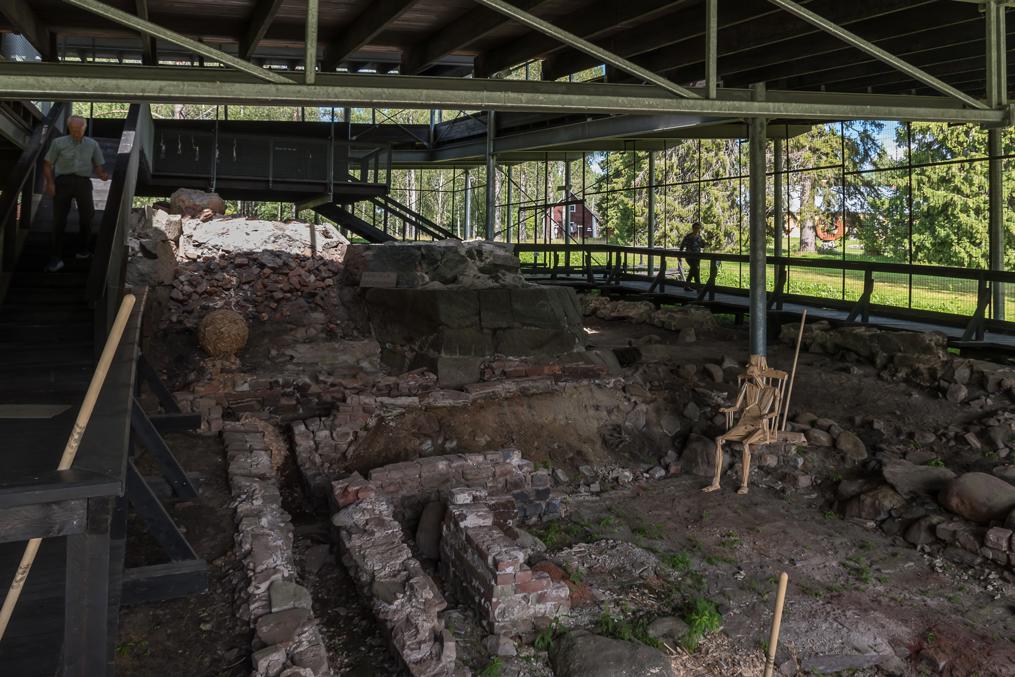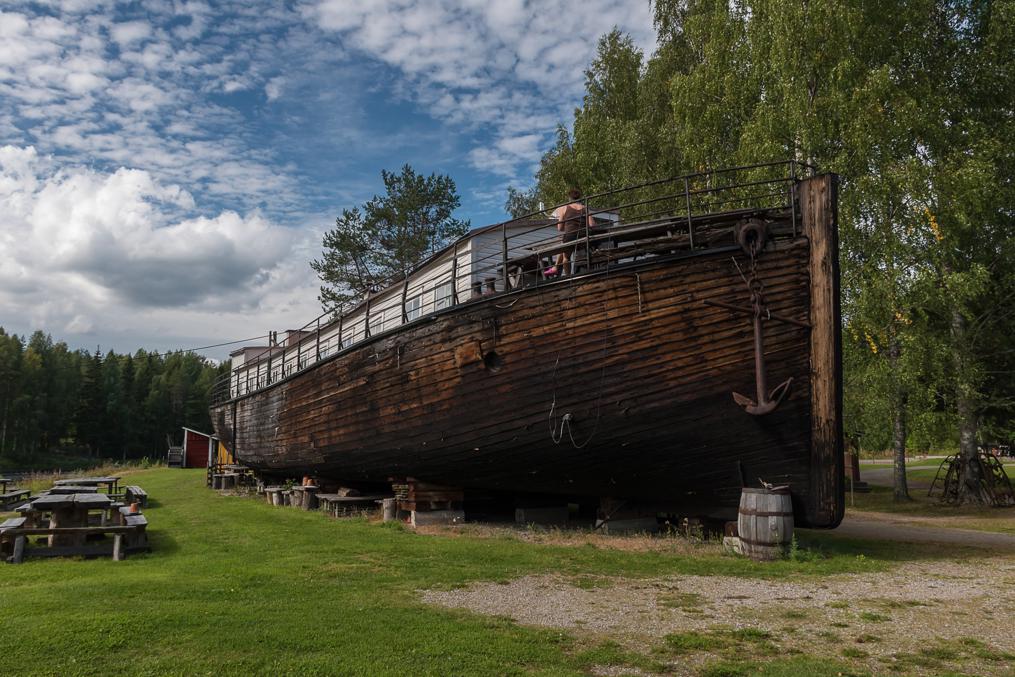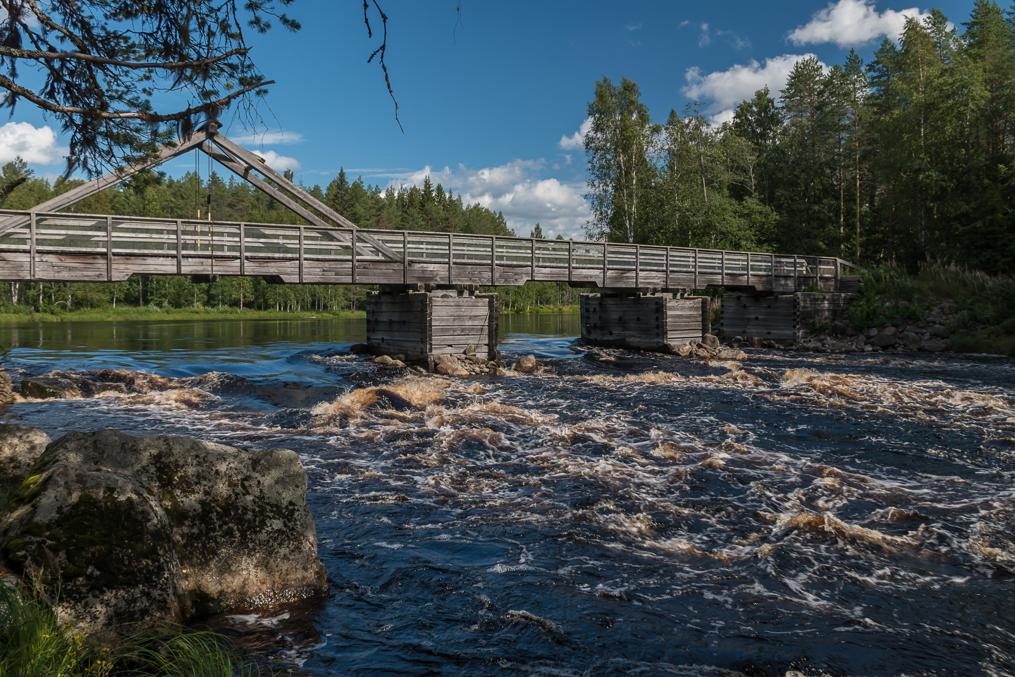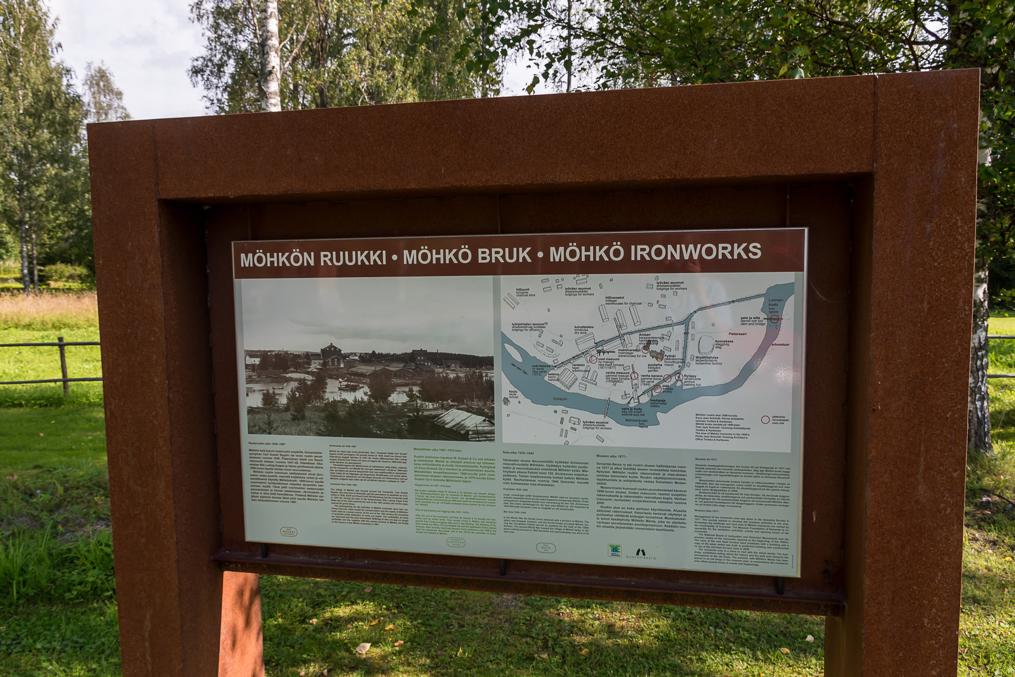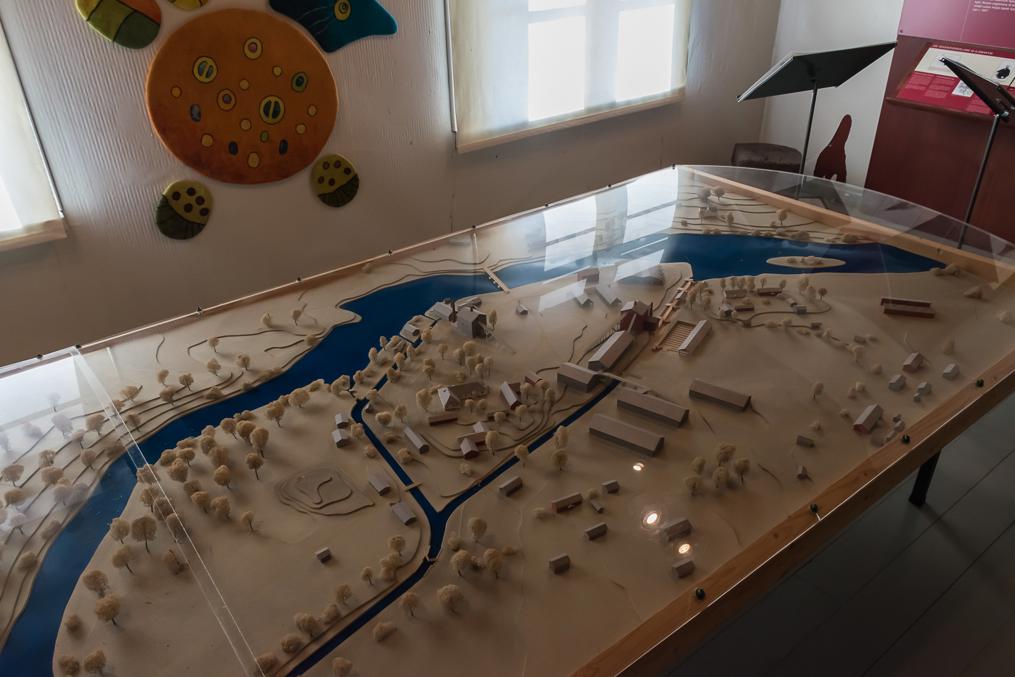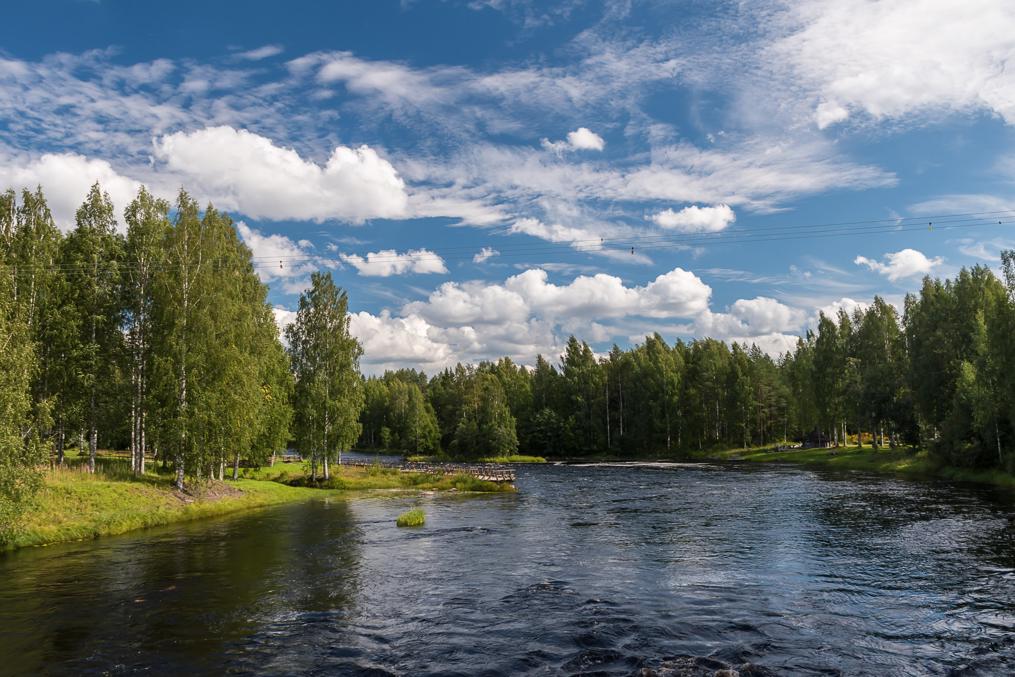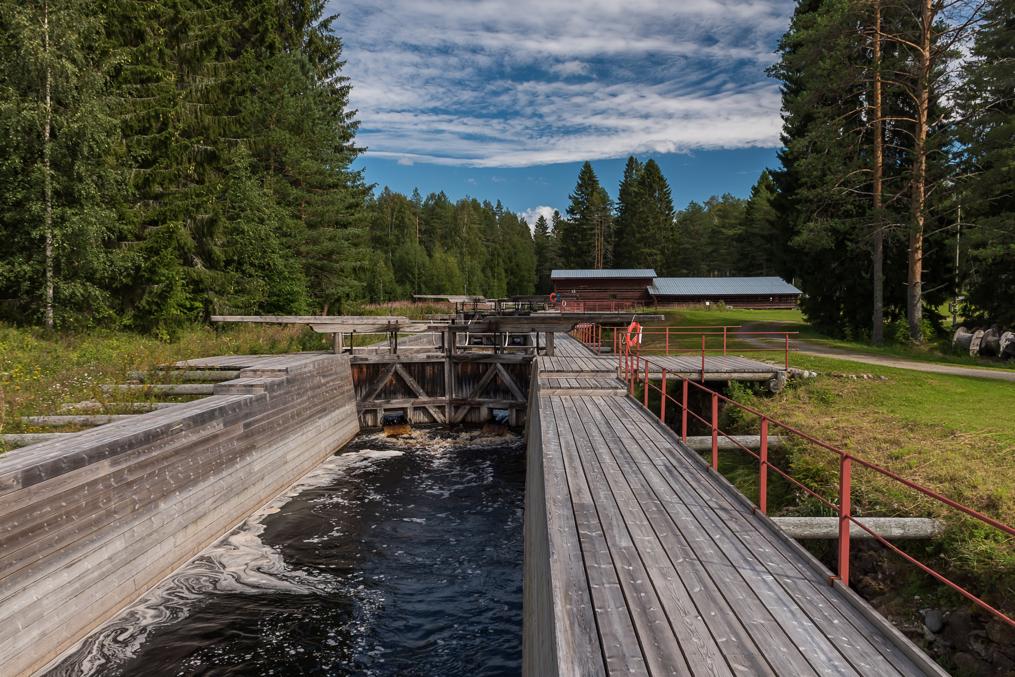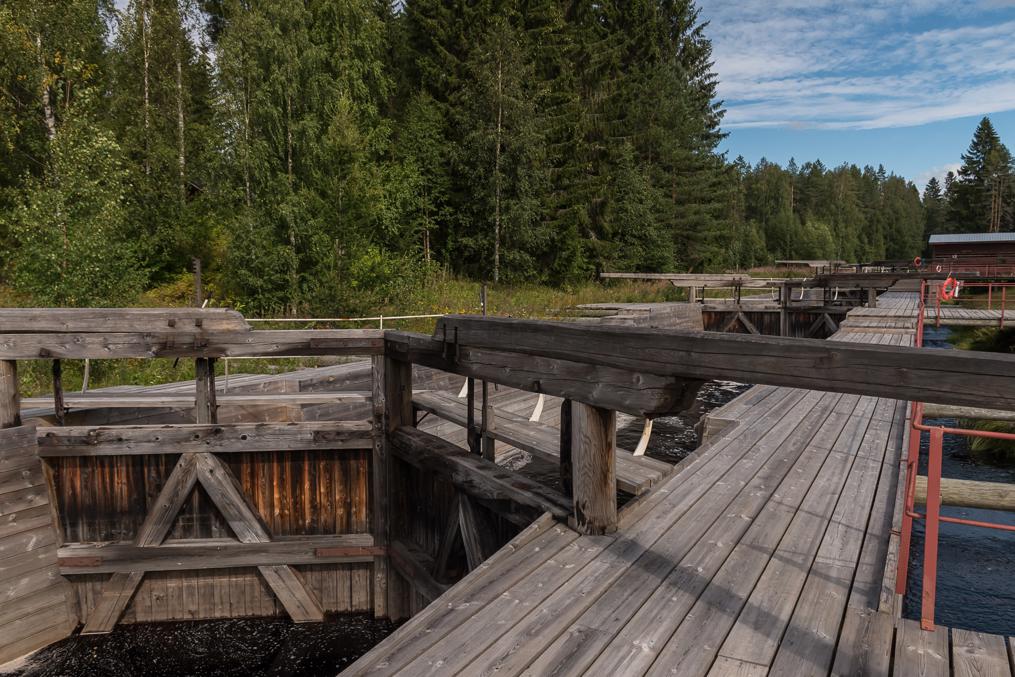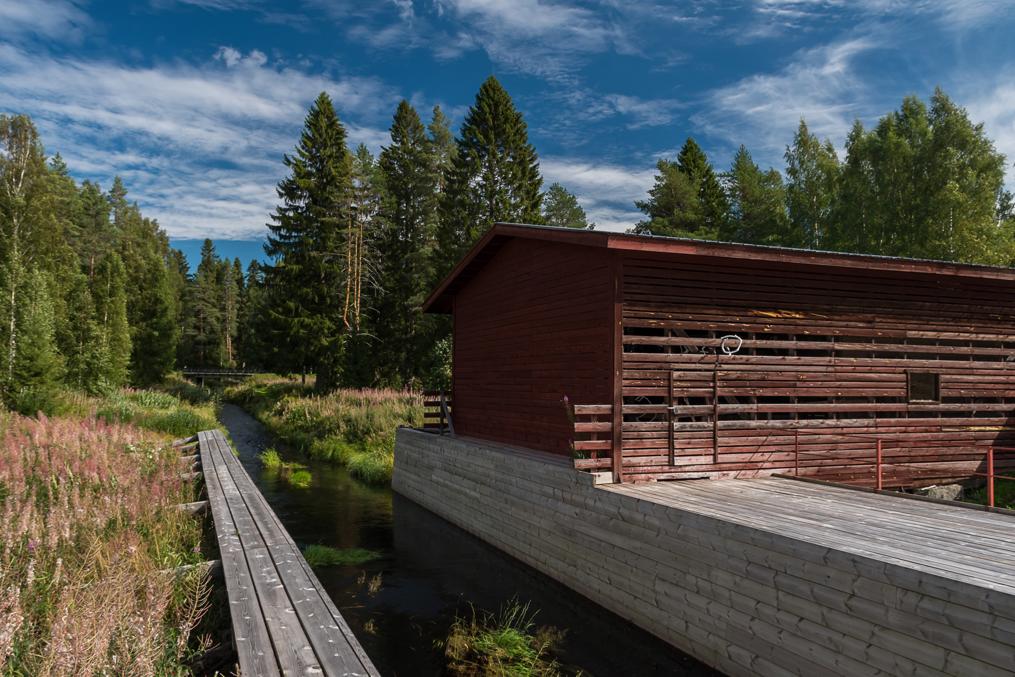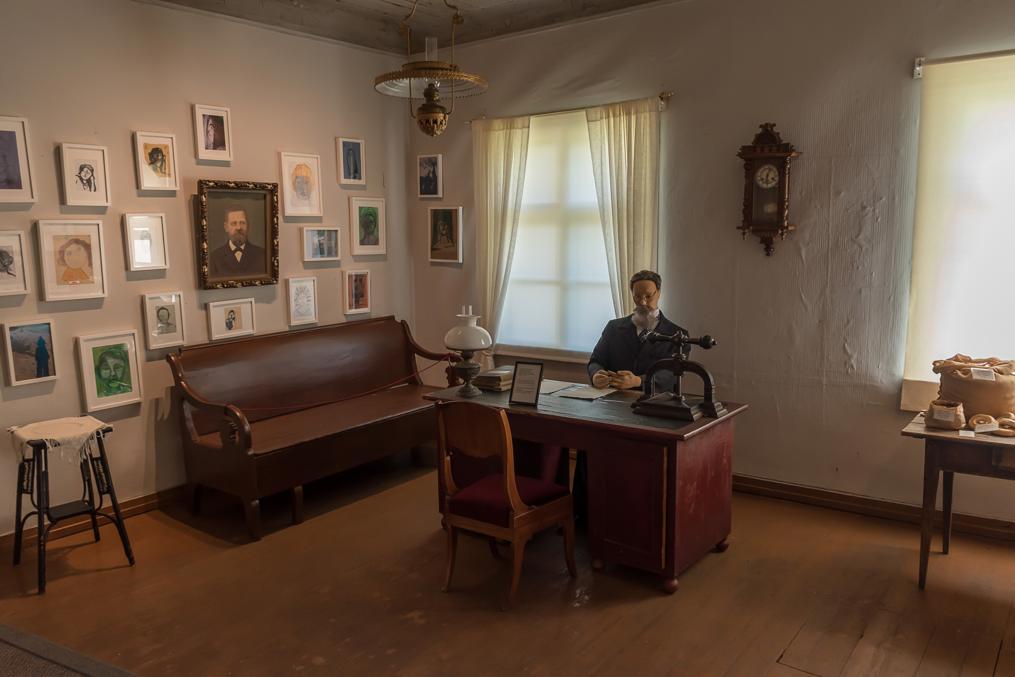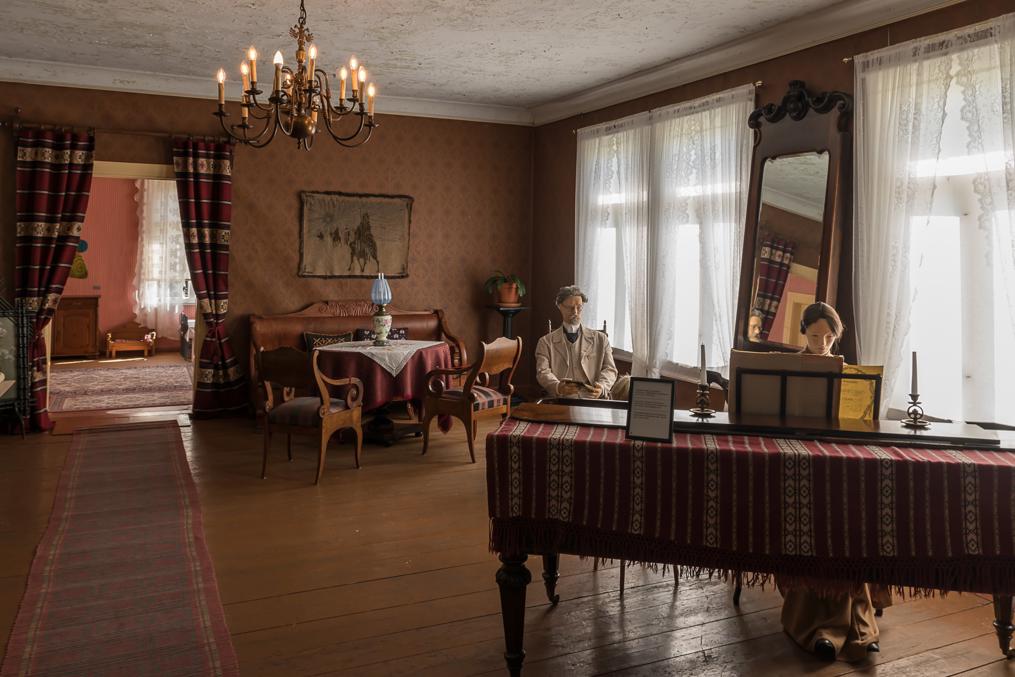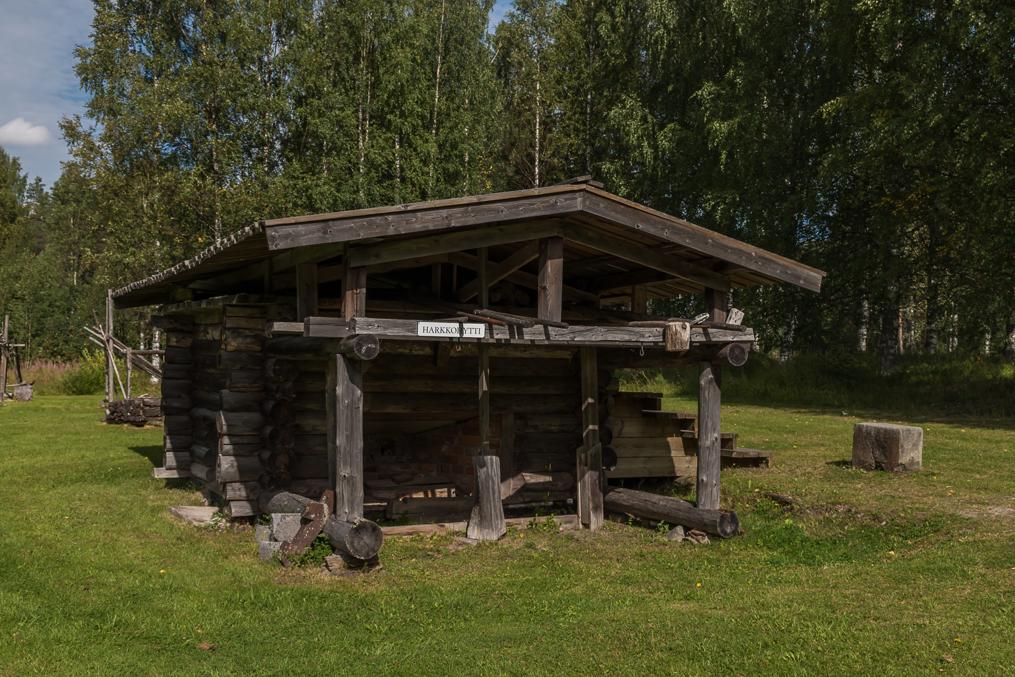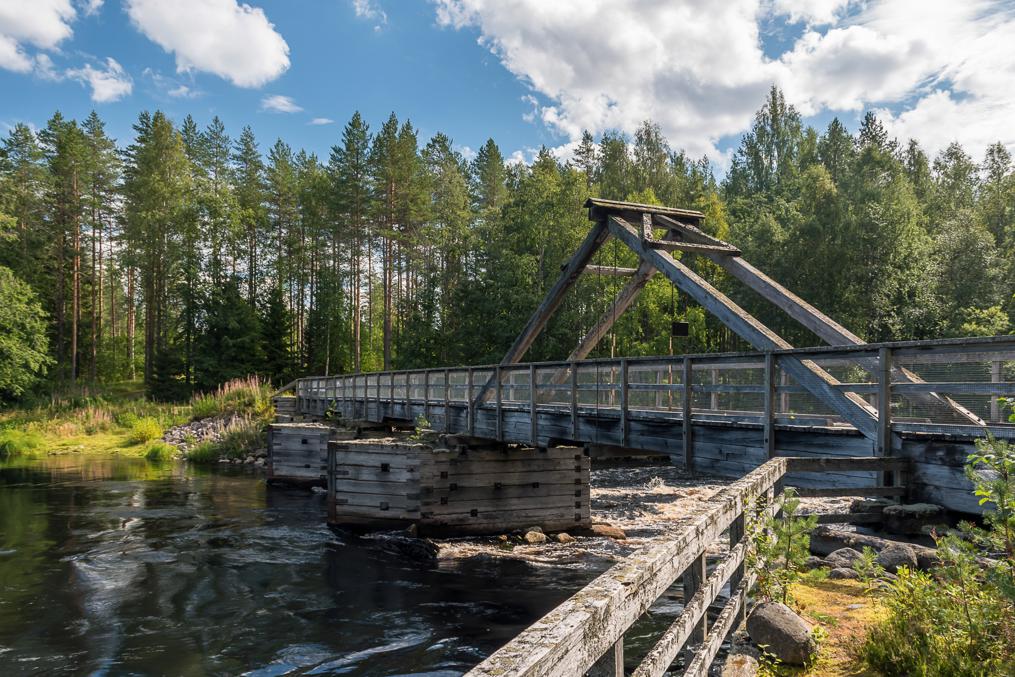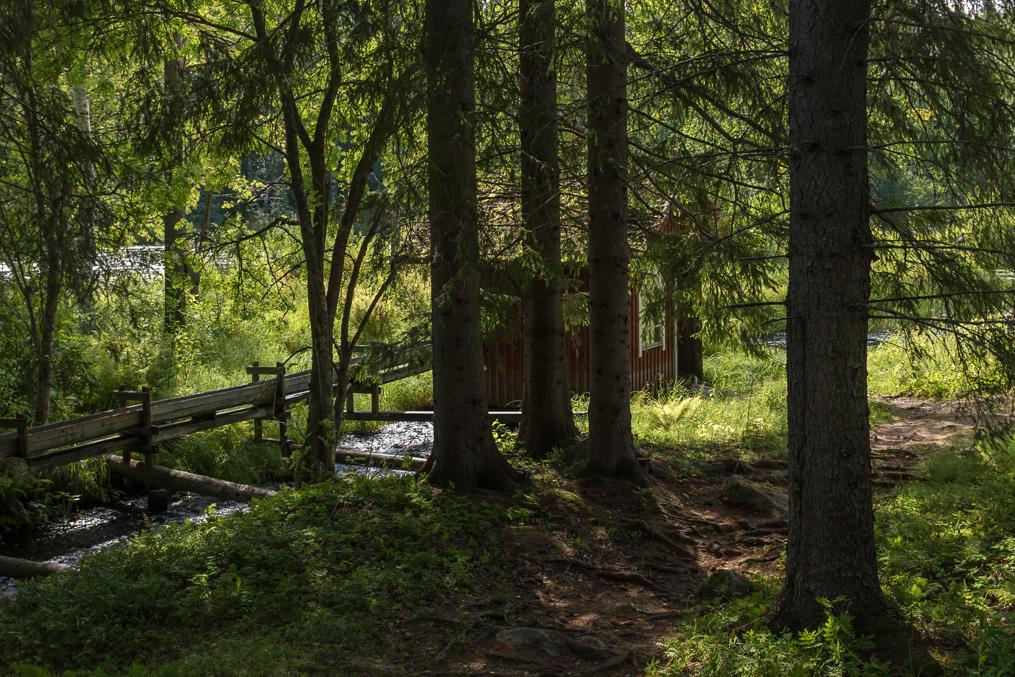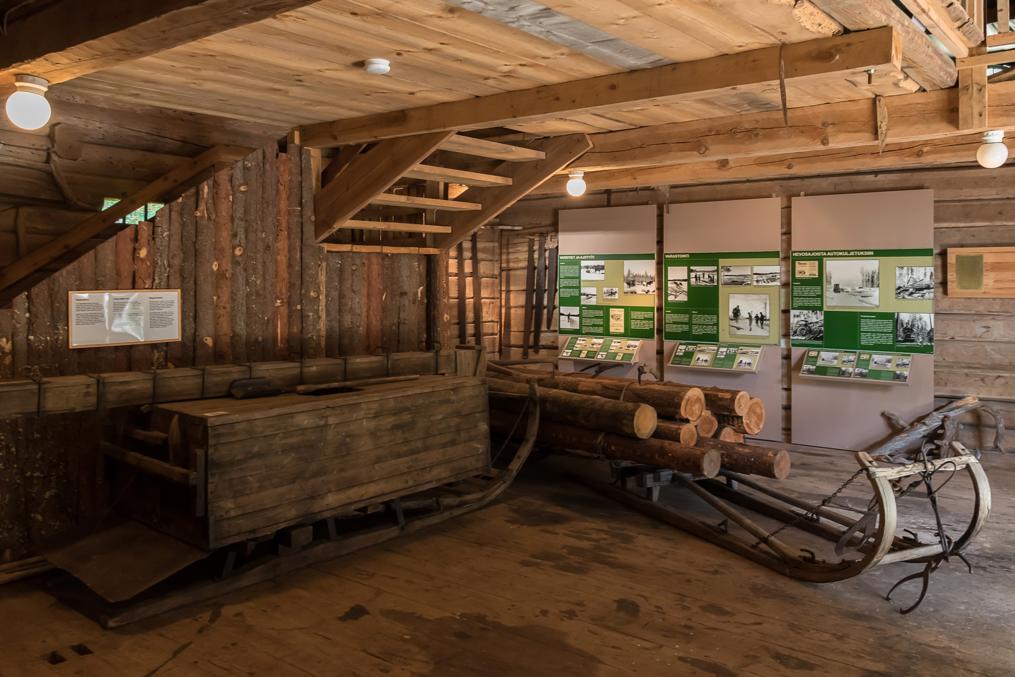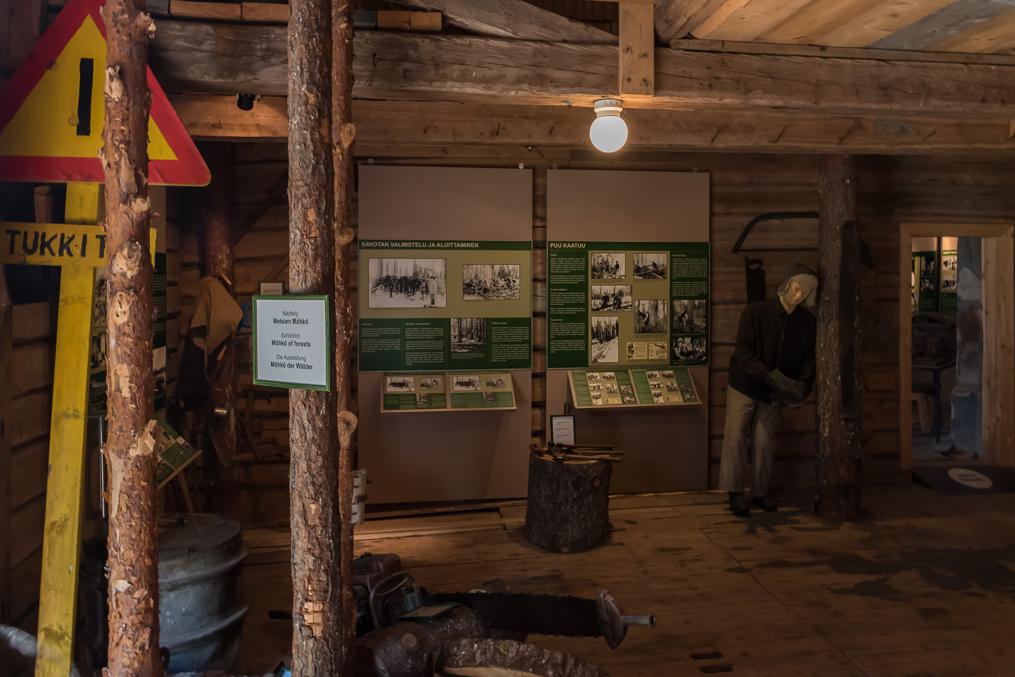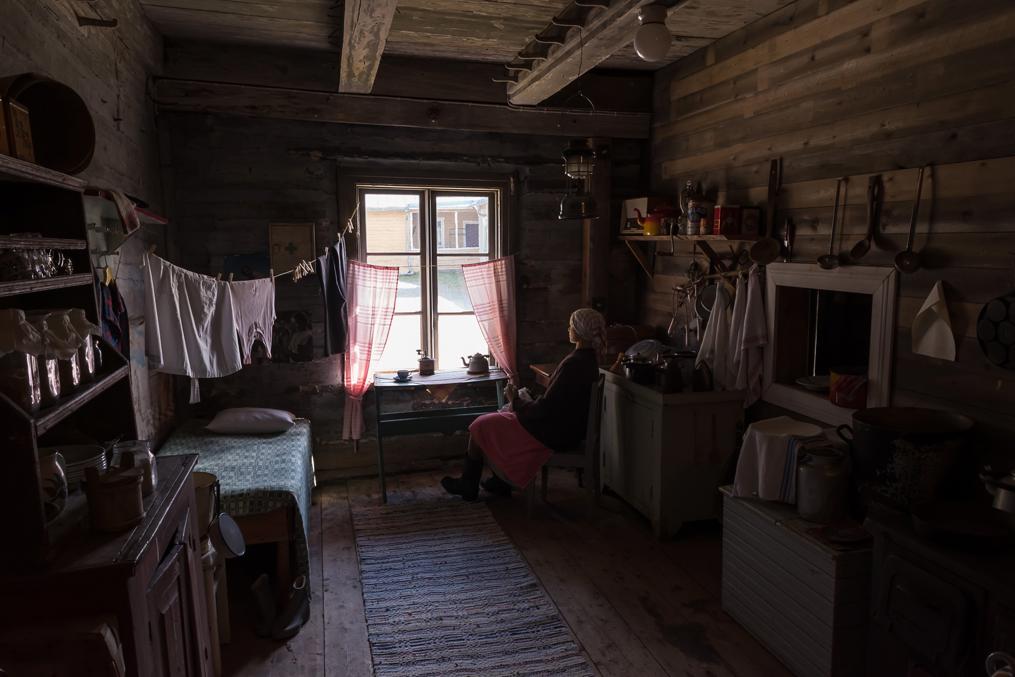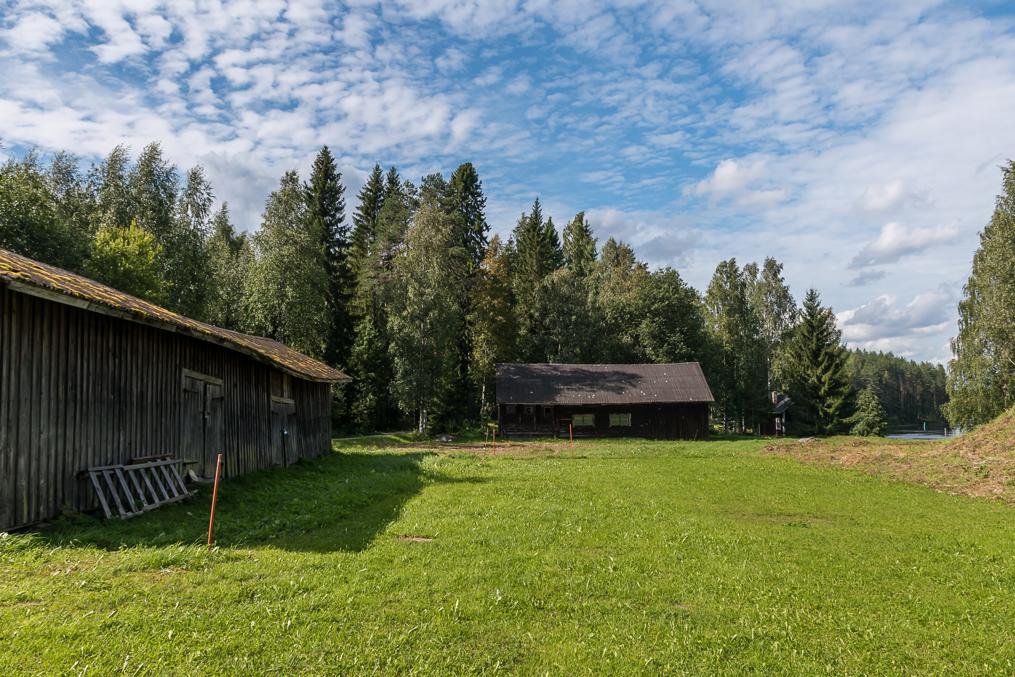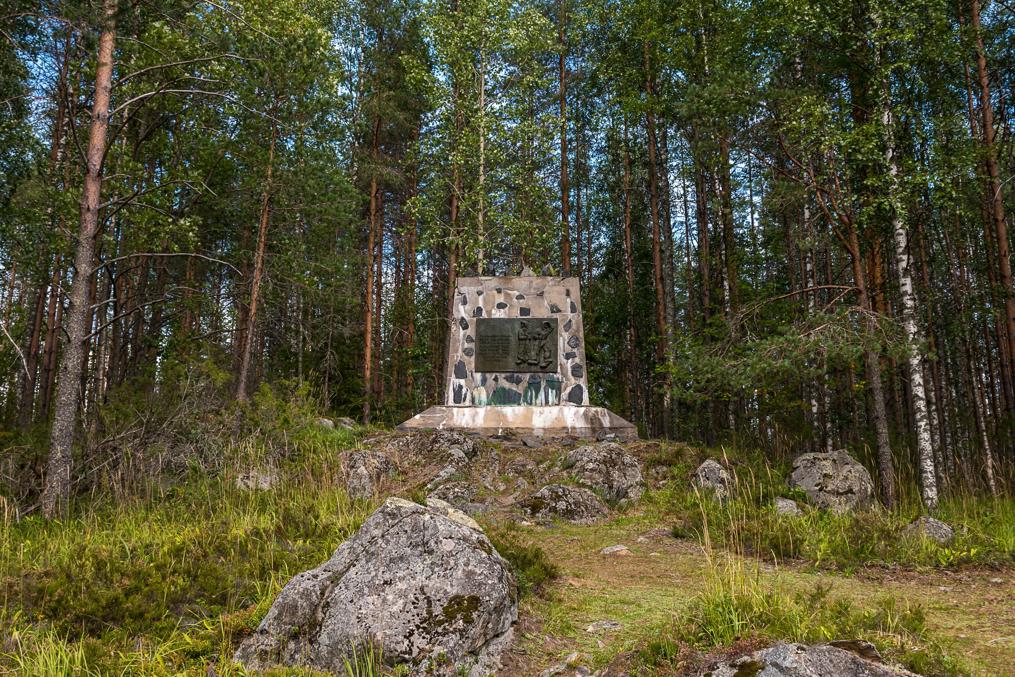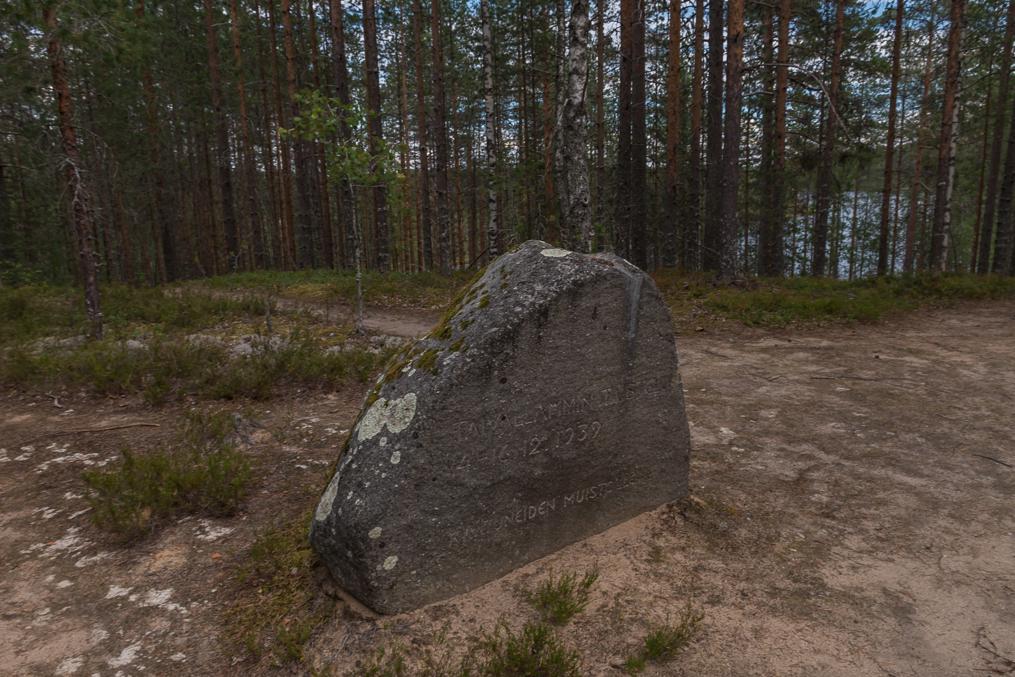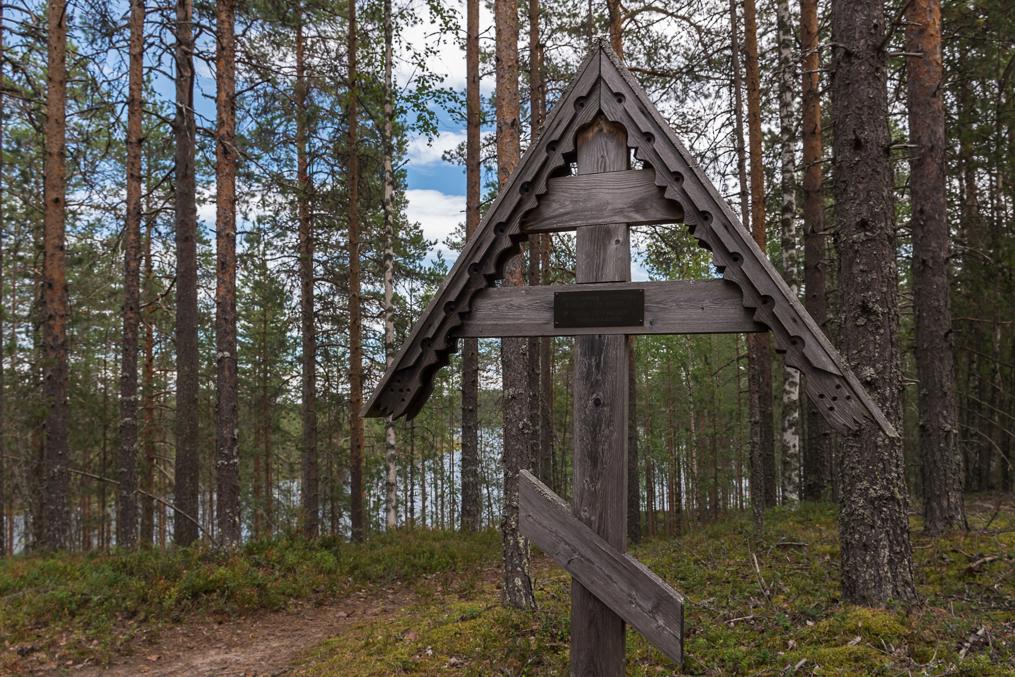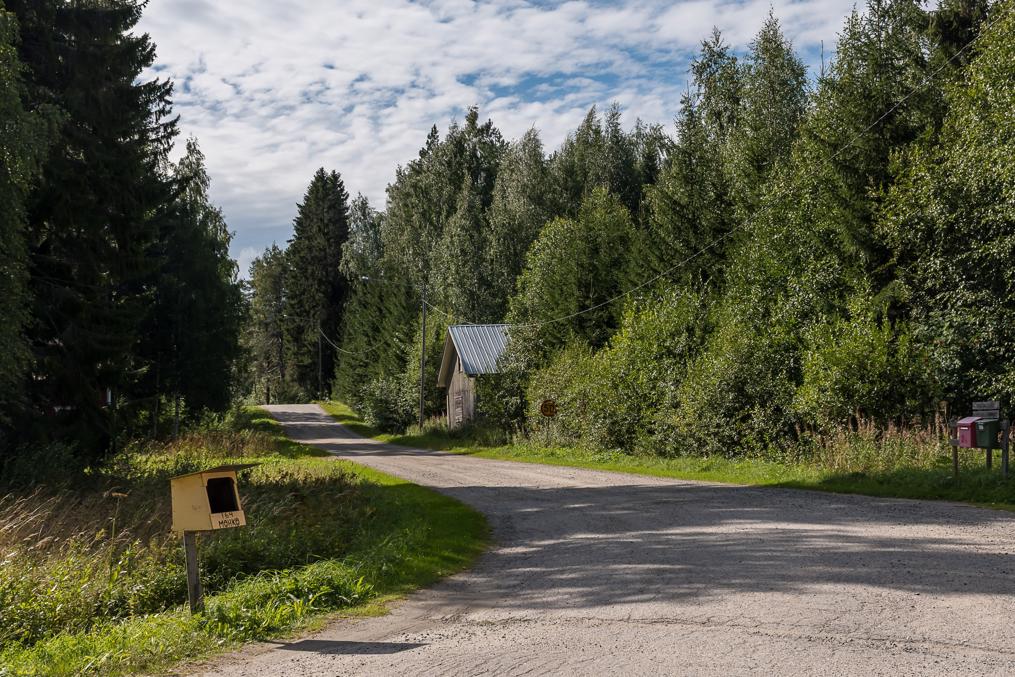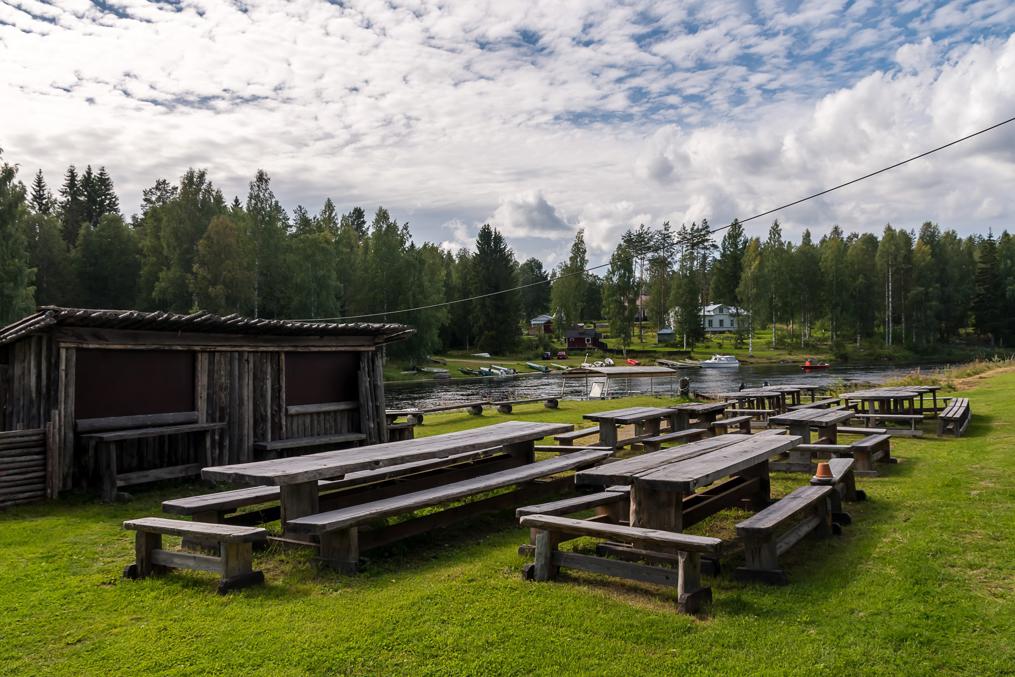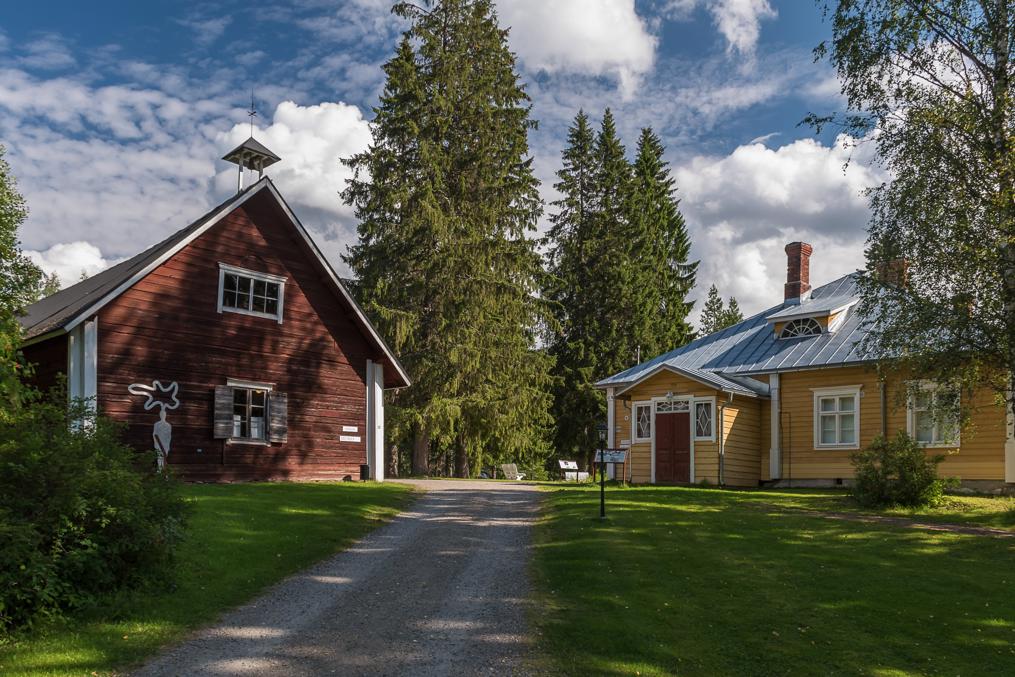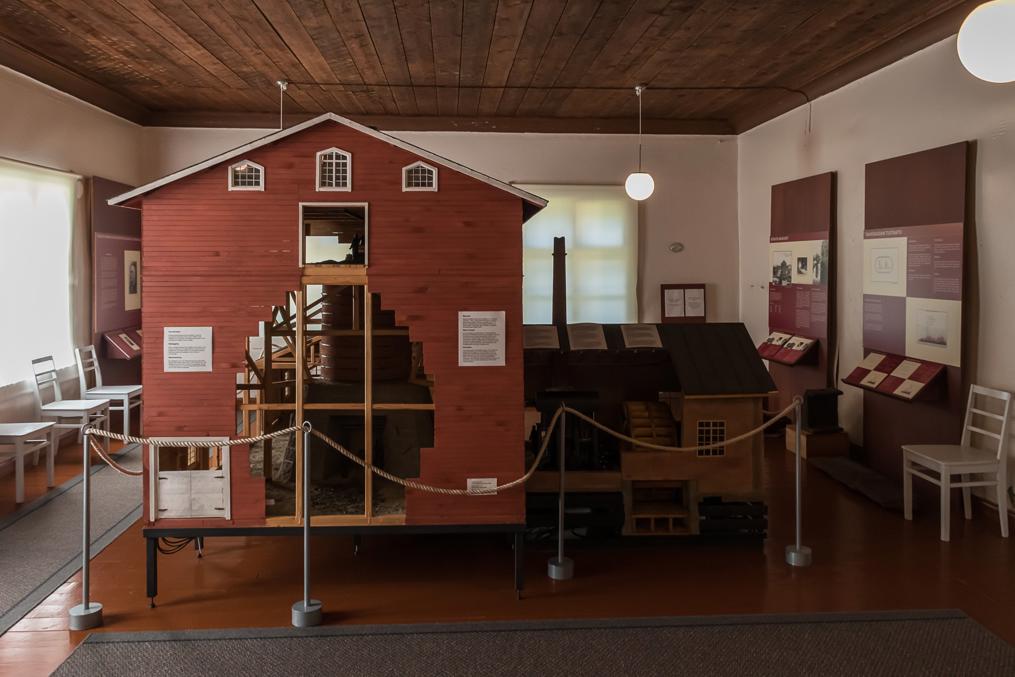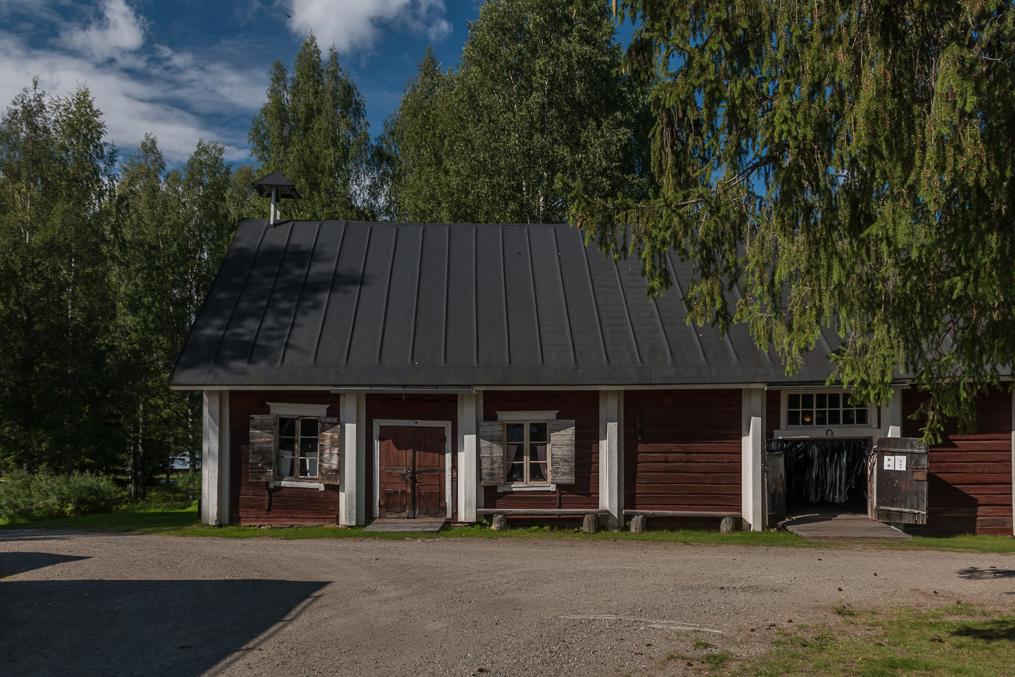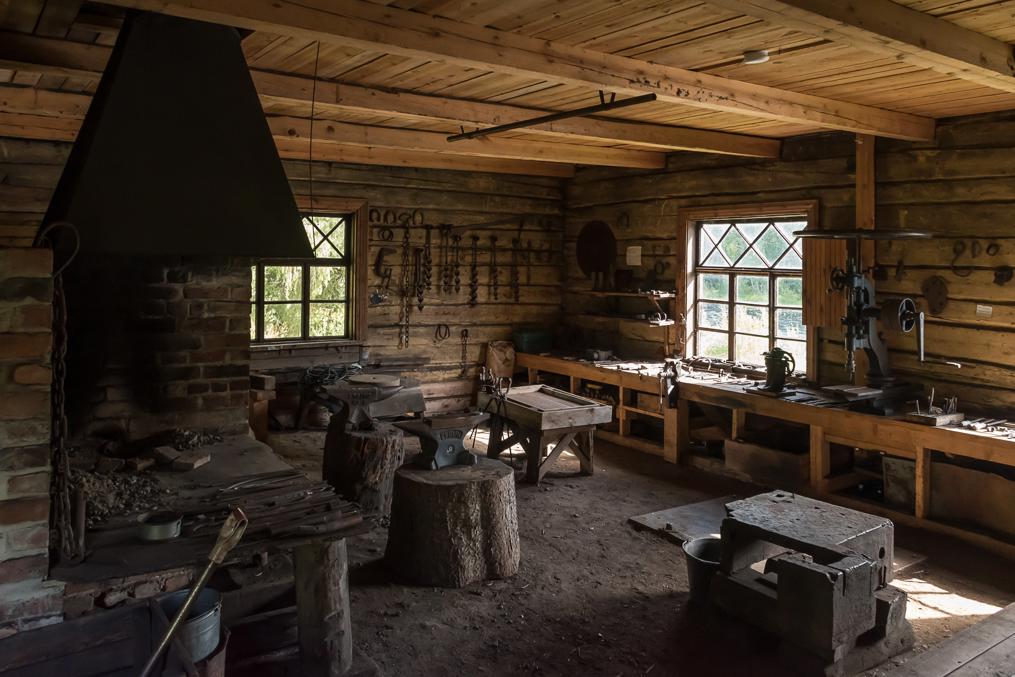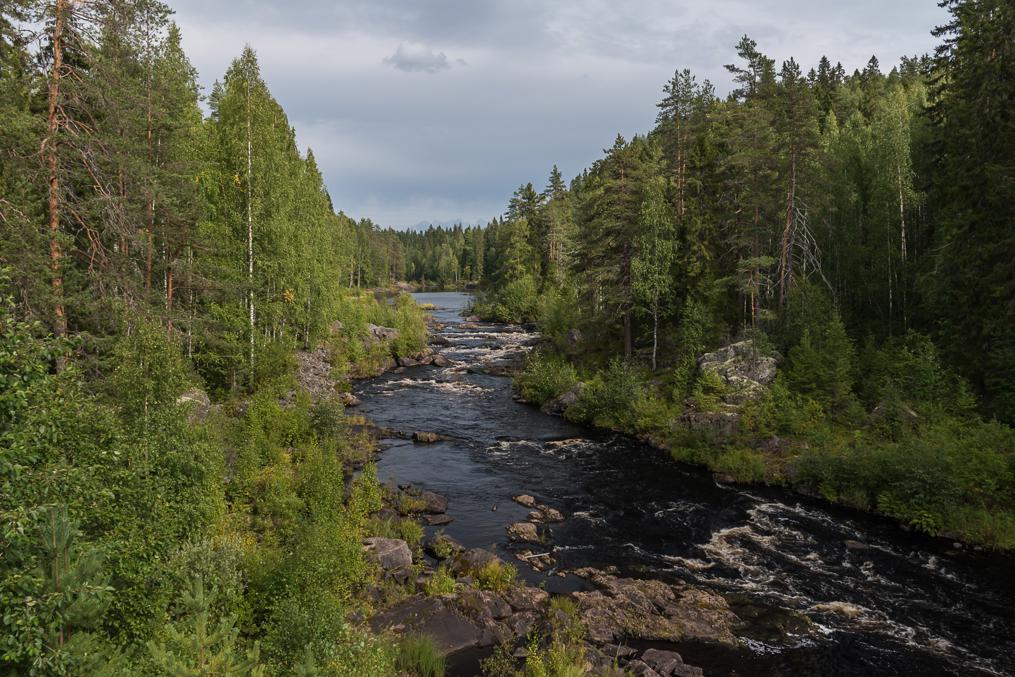Möhkö ironworks ruins is one of the easternmost tourist sights of all Finland, in the village of Möhkö in Ilomantsi in Finnish North Karelia (Pohjois-Karjala), less than 3 km from the modern Russian border and close to the easternmost point of Finland and continental EU.
Ironworks (ruukki) were a fairly common kind of an early industrial facility in Finland in 1600-1800s (and virtually the only industry Finland had before the industrial revolution came to Finland in late 1800s). As the name suggests, they manufactured iron and iron products, in modest quantities. At least 134 Finnish ironworks are known from history. The largest concentration of them was in Western Uusimaa (Fiskars, Fagervik, Billnäs, Mustio/Svartå, Mathildedal, Teijo are still well-known names and tourist spots). They were typically using ore brought from Sweden.
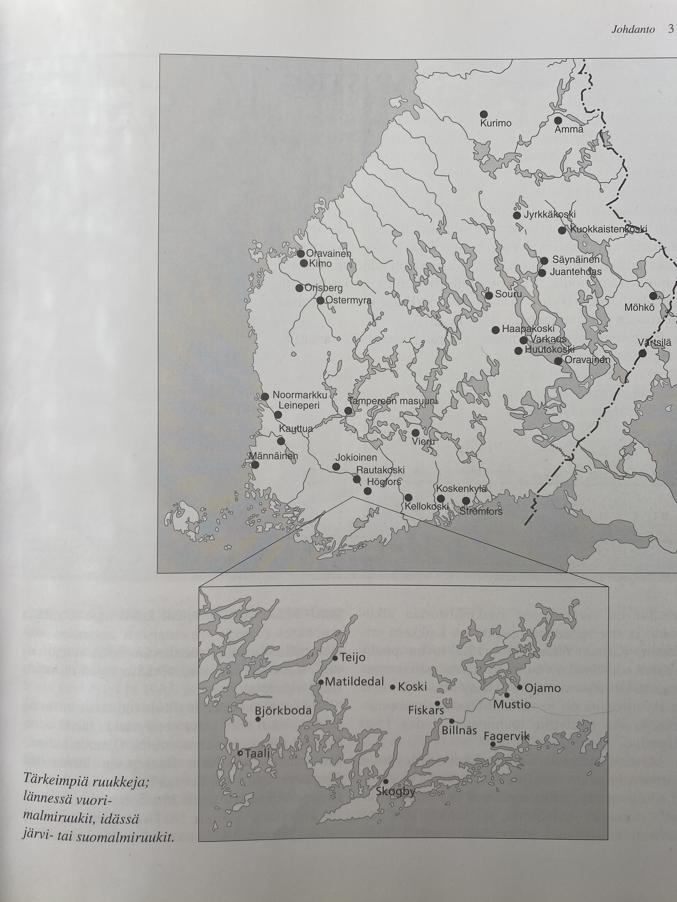
However as you can see from the map Eastern Finland also had quite a few ironworks, and these were using local lake or bog ore. Möhkö was one of them, established at the rapids of Koitajoki river in 1849, and using ore from various lakes in the area, especially the largest one, Koitere.
The river and the lakes also formed a natural transport link, as these lands were otherwise quite remote. Pig iron produced here could be shipped either through Saimaa lake system and canal, or to Värtsilä factory for refinement, and then through Ladoga lake and Neva river.
The destination typically was St. Petersburg. In winter transportation was possible by sledge. A canal big enough for steam boats and barges was built here in 1871. It has been partially restored, although currently you can sail downstream only as far as Pamilo hydro power plant dam (Pamilo name apparently comes from Russian господи помилуй! ("gospadi pamilui"), "Lord have mercy!").
The owners of Möhkö in the 19th century were Arppe industrialist family from Kitee, who owned also the Värtsilä factory and were the founders of Wärtsilä company, a major part of Finnish industry to this day, even though Värtsilä village remained in Russia after the war; Wärtsilä builds ship engines now, mostly in the city of Vaasa.
Iron was produced in blast furnaces (masuuni), of which there were two. Ruins of both can be seen now, little more than foundations, covered now to protect them from the elements.
Blast furnaces were preferred at ironworks due to efficiency; simpler and smaller bloomeries (harkkohytti) were usually only used for small-scale iron production by peasants, even though they produce more immediately useful metal (wrought rather than pig iron). There is a functioning bloomery here now as well, occasionally used if I understood correctly.
Blast furnaces also needed fuel (charcoal, produced from the local forests), limestone (brought from near Jänisjärvi, nowadays in Russia) and a power source for blowing air. The latter was provided by Lotinankoski rapids (name apparently comes from Russian плотина, meaning dam).
Eventually all original ironworks became obsolete and shut down, at least in their original state, and so did Möhkö in 1907. Many ironworks sites however simply switched to some other industry; Möhkö was sold to W. Gutzeit & Co (part of modern Stora Enso company) and became a sawmill. A separate exhibition tells about those days and the forestry in Möhkö area.
From that time remain for example the workers quarters nicknamed "bedbug castile" (Lutikkalinna), and Möhkön Manta barge, also a place for loggers to sleep on Koitajoki back in the day, now a cafe.
Möhkö was occupied by Russians early in the Winter War (as far as I know residents were evacuated), and some major battles took place near it especially in the Continuation War in 1944, destroying a lot of what remained in Möhkö. There are lots of war monuments in these lands.
The new border was drawn quite close to Möhkö; previously this wasn't really a border village, but now the restricted border zone begins just 2 km away. Still, apparently after the war there was an agreement about some timber floating from the Soviet side continuing. It lasted until the 1970s; after that the sawmill was shut down and demolished, and the days of industry at Möhkö were ended.
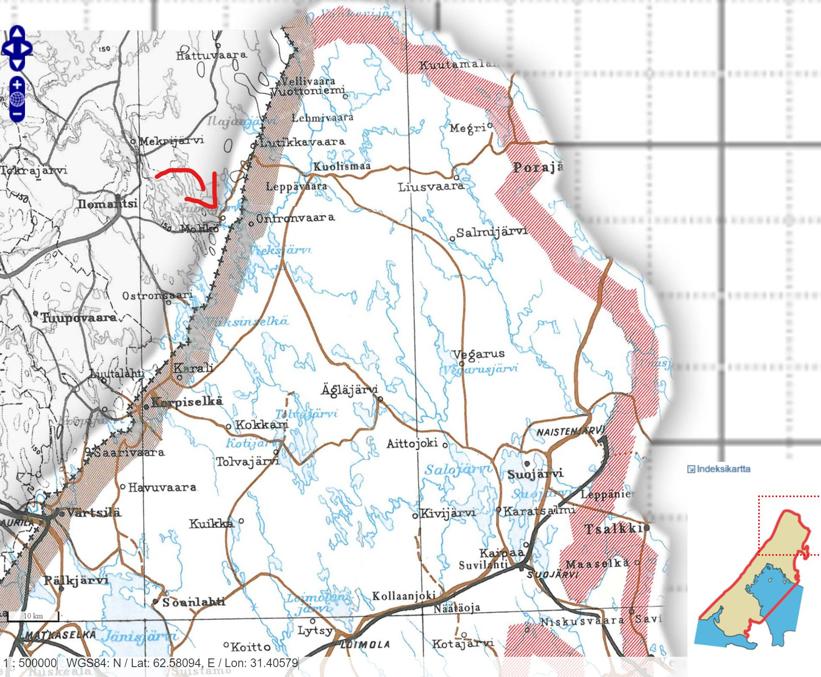
The once lively village of Möhkö, around 500 people at its largest, eventually mostly died out and lost all its services, like a school and a grocery store. Now its livelihood is mostly in tourism, and whatever remained from the ironworks and the sawmill has been restored. Becoming a museum is also a common fate for former ironworks; often some old industrial buildings, worker quarters and owner mansions have remained to these days, architecturally distinct from the rest of the countryside.
And I must say the ironworks museum here is one of the best that I've seen so far.
Nature tourism is of course also important here; North Karelia is famous for its nature, after all. For example the 91 km Pogostan kierros hiking trail (Pogosta Circle; pogosta is a name for Ilomantsi village often used by the locals, coming from an old Russian погост, meaning "parish"), which includes parts of Susitaival (Wolf Path) and Taitajan taival (Master's Path) trails, and Petkeljärvi National Park, passes through Möhkö.

